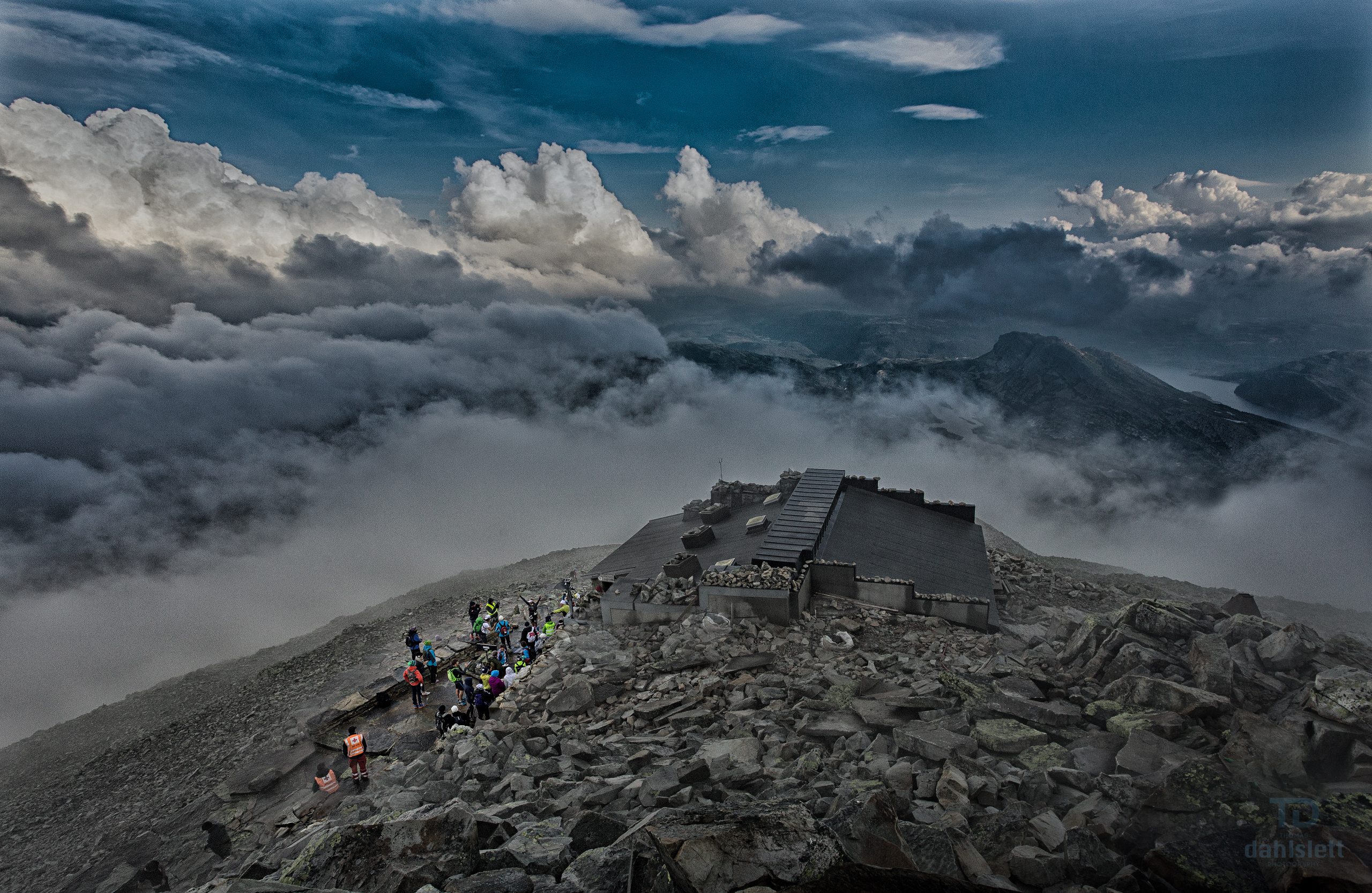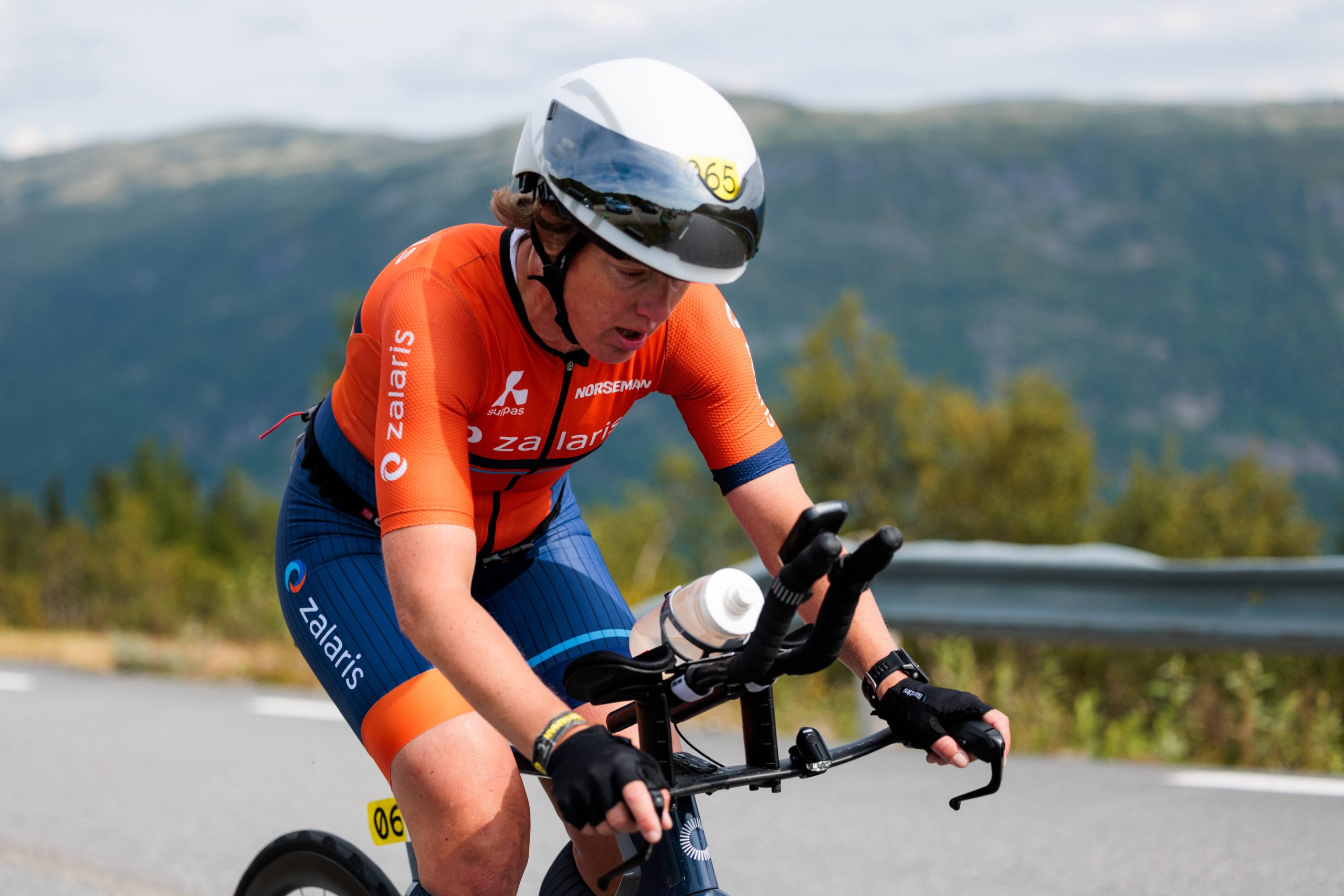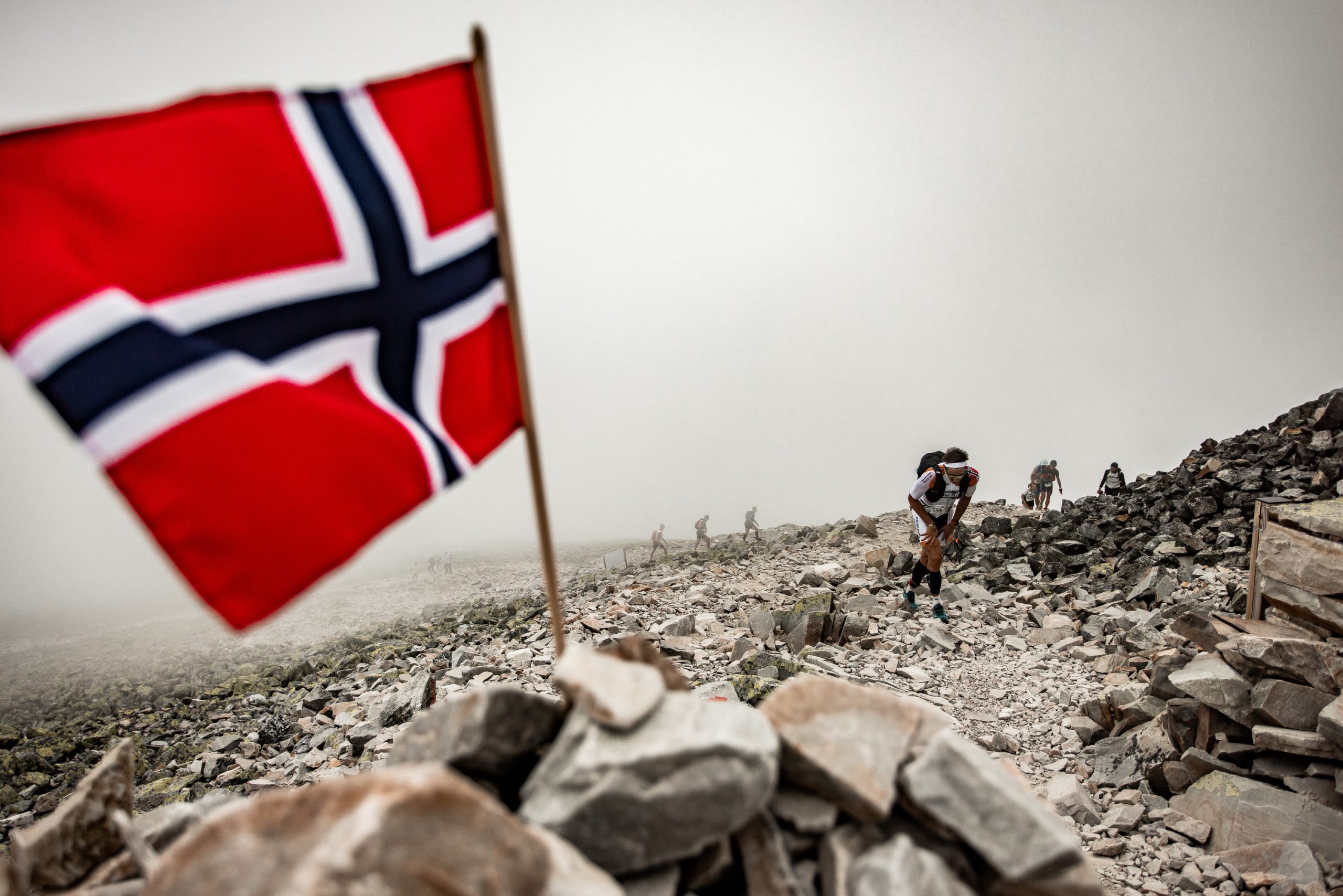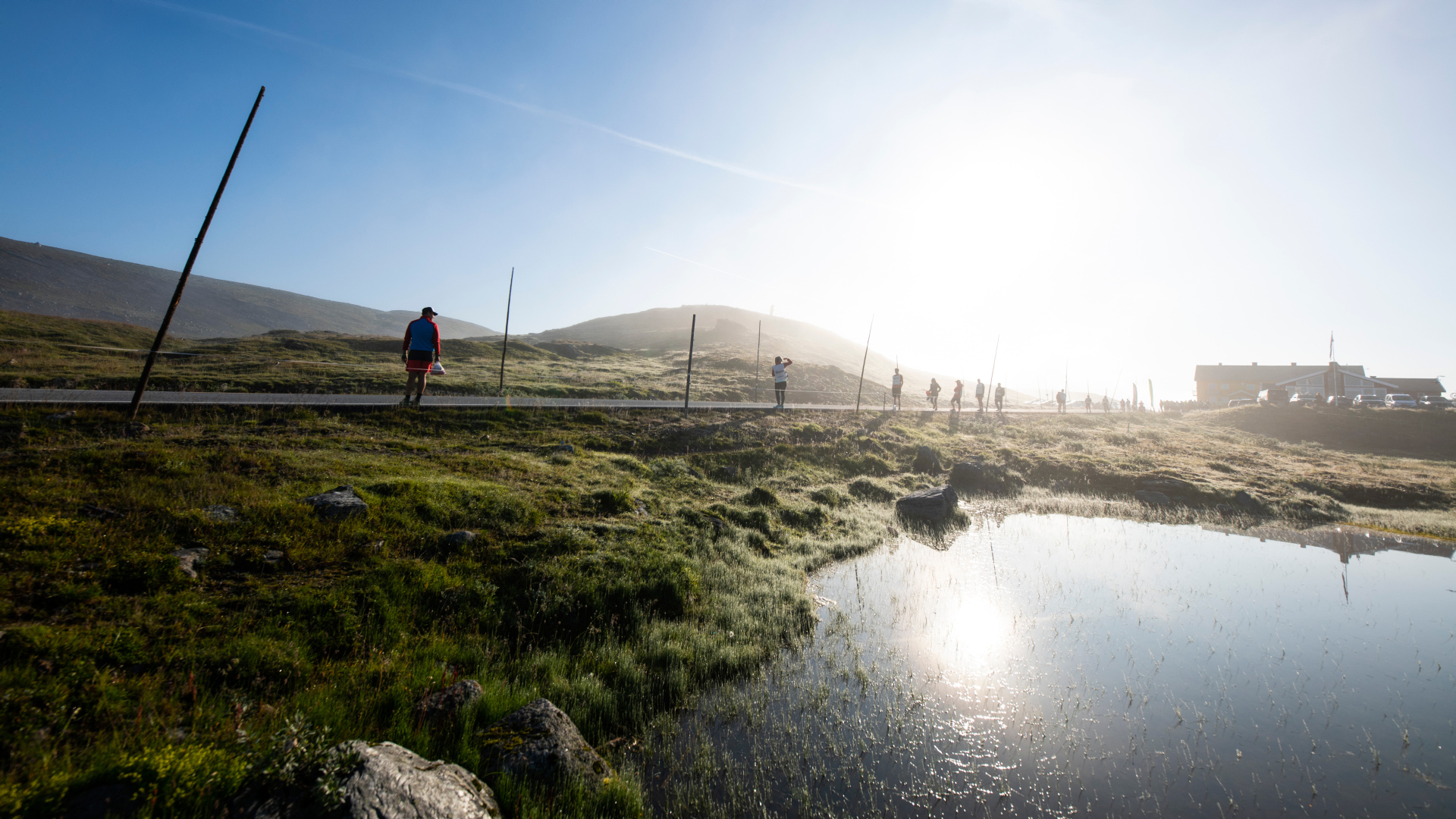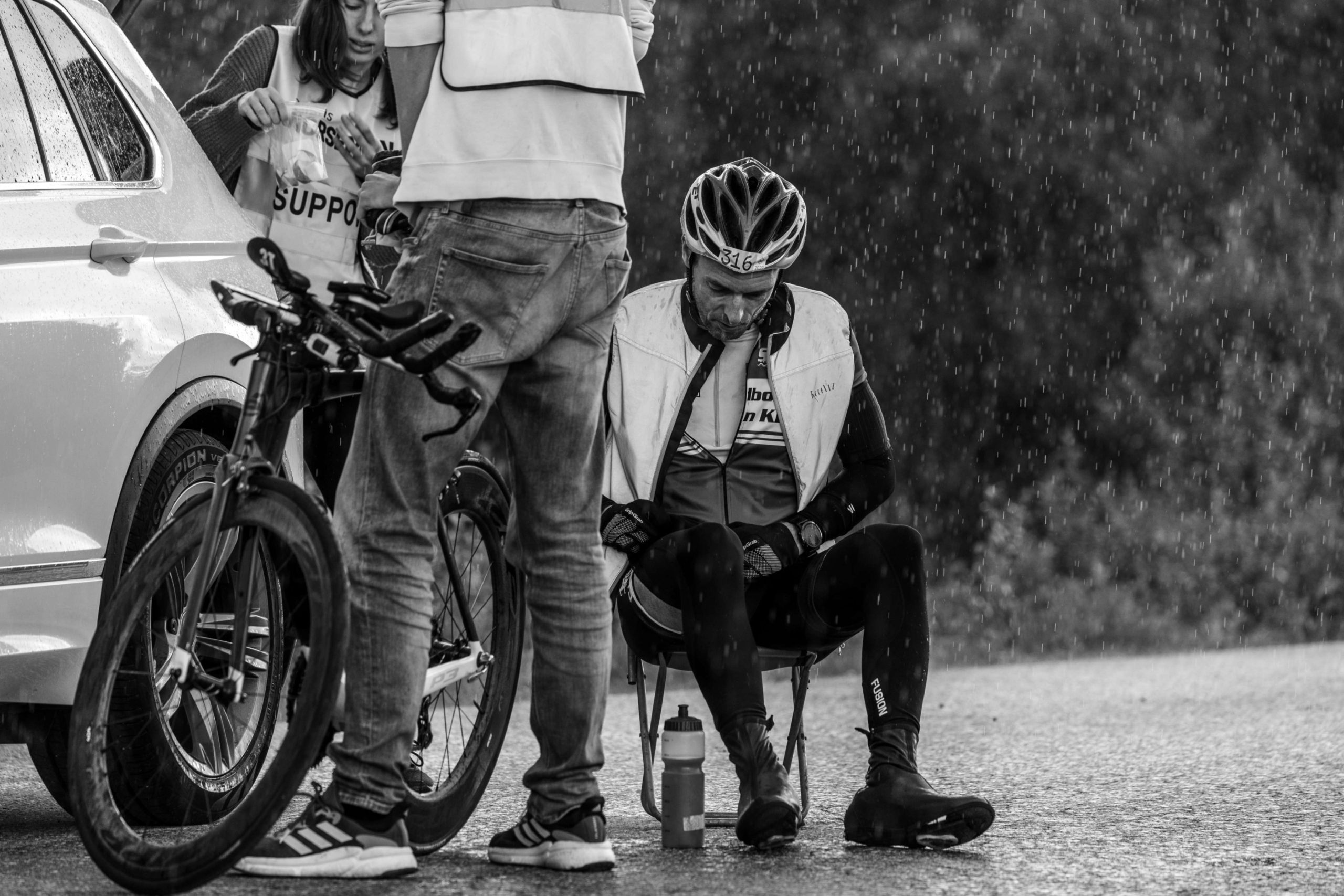Third episode in our You are not ready series focus on the Norseman run leg and how you and your support can prepare for Mt. Gausta. If you missed the two previous episodes about cold water swimming and bike leg, watch them here.
Scroll down for the episode notes.
Fredrik Mandt:
Hey, guys. Welcome to the third episode of Norseman, “You Are Not Ready” series. Other races might hold your hand. Not us. So if you can’t get it together in time for the event, just skip it. Let’s focus on the run leg now.
Jørgen Melau:
Yes.
Fredrik:
But I want to skip the first 37.5 kilometers of the run.
What happens at 37.5 kilometers of the Norseman run?
Jørgen:
We have a checkpoint there. So, first of all, we check that all athletes at the checkpoint is fit, like medical fit to enter the mountain. Before we even open the mountain, we check the weather and the environmental conditions on the mountain to see if it’s safe to send the athletes up the mountain, because we have had some years that we have closed the mountains due to heavy snowfall, for instance, and it can also be due to darkness and lightning and thunder that we have had on the crew races. But at the checkpoint on 37.5, the most important thing next to the medical checkup is that we check their gear that they have in their backpacks. Both the athletes and the support need to have a backpack with the mandatory equipment.
Fredrik:
Let’s have a look at the backpack and what is the mandatory equipment that each athlete, and also each support, needs to bring in their backpacks, because both athlete, and at least one support, need to bring backpack.
Jørgen:
And before we start that, there is a lot of questions why the support needs to have that backpack. And that is because they are exposed to the same environmental factors and the stressors of the mountain. And the medical crew, normally, they have as much incident with the support as we have with the athletes, so that’s why they need this backpack. You need to have a backpack, and we don’t care what type it is, but most of the athletes use like a basic run backpack, but you can pick any one you like. But we would recommend some type of waterproof, or at least some water resistant, backpack. Then you should have warm clothes. And here it is. There are many types of warm clothes, of course, but this is a warm shirt that we recommend. Warm clothes. Gloves to keep your hands warm. A cap or a…
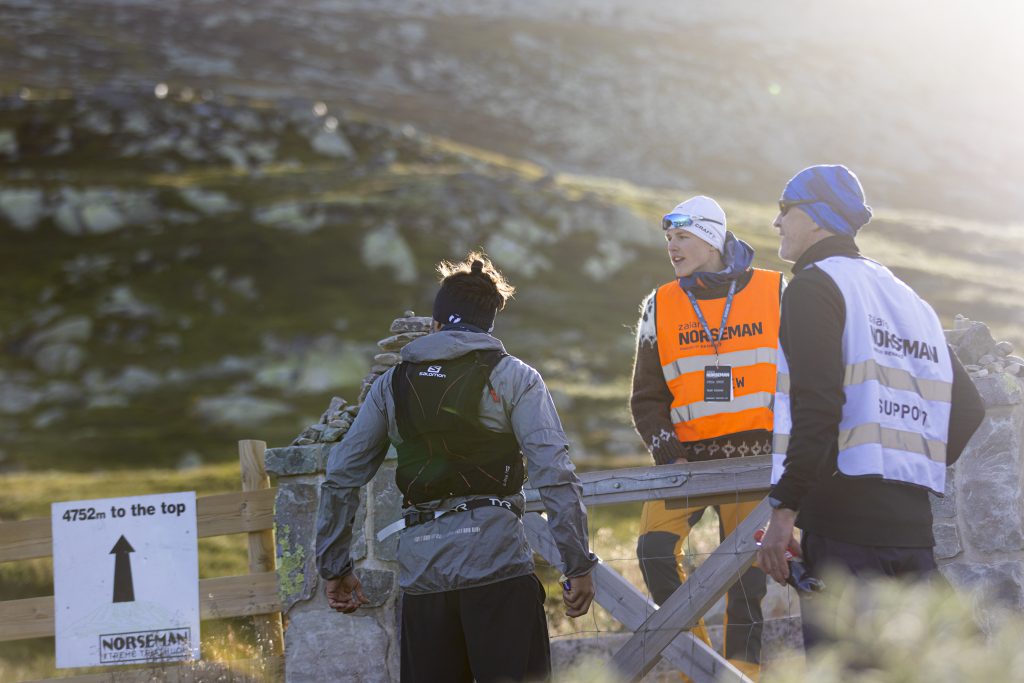
Fredrik:
Hat.
Jørgen:
Yeah, hat. Jacket. That needs to be windproof and waterproof.
Fredrik:
The important thing is that the jacket is waterproof and with taped seams.
Jørgen:
Yeah. Pants, windproof pants. We want you to have some extra food. And also, again, different types. We don’t care what you bring. And it’s also very important that you have a water bottle, headlamp, or a flashlight.
Fredrik:
Yeah.
Jørgen:
I think it’s most useful to have a headlamp, but we also allow a flashlight. And the reason is that the mountain can get dark very rapidly, but also, all the athletes, it’s normally transported down by the elevator inside the mountain, but that can have a malfunction. It has that several times. And then you have to walk down the mountains in the darkness, and then you really need a headlamp.
Fredrik:
And then you also need to secure that the batteries are fully charged.
Jørgen:
It has to be fully charged when you start to race. Yeah, exactly. And you also need some first aid equipment. And again, you can choose nearly anything you want, but we want you to have at least a pressure bandage of any kind, and also a windshield for using for hypothermia.
Fredrik:
This is like an emergency blanket?
Jørgen:
Emergency blanket. Exactly.
Fredrik:
Yep. You also need to bring either credit card.
Jørgen:
Yup.
Fredrik:
Or cash.
Jørgen:
Yup. Yeah.
Fredrik:
And why is that?
Jørgen:
Because the waffles on the mountain hut is very good, so you’ll be very sad if you can’t buy the waffles on the mountain top. No. You need them for emergency, obviously.

Fredrik:
Then we have one backpack for the athlete and one backpack for the support. And I just want to ask Hans-Petter here, you have firsthand experience. Do you have any advices for the athletes support, other things to bring, than the mandatory equipment?
Hans-Petter:
It’s no problem to stay warm up the hill, and when you climb through the rocks, and you’re really focused, but as soon as you get up there, and it’s a cold wind, and your body, that’s mainly burning fat there, has no real energy to give you heat. It’s just fantastic to have a warm jacket like this also in the bag, and to have to put on when you get up there. So that would be my recommendation, in addition to the required stuff, put some real warm jacket in there.
Jørgen:
Excellent.
Fredrik:
I’m freezing a little bit. Can I borrow that one?
Hans-Petter:
Yes, sure.
